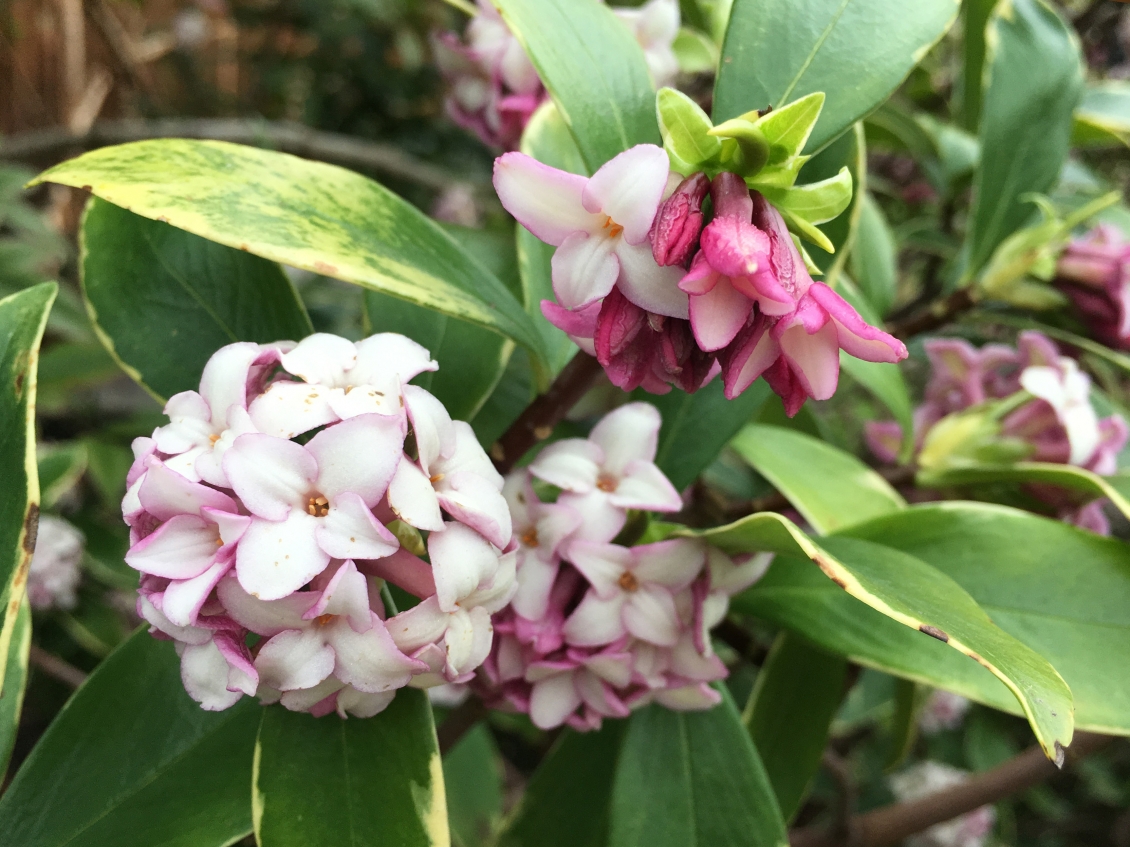
It’s March, and the rich scent of daphne punctuates the air as the first season of flowers bloom here in Eugene, Oregon. For many, daphne’s fragrance evokes the first teasing hints of spring. Above all other sensory experiences, scent has the power to conjure memory, triggering associations and adding depth to the present moment. It is elusive and yet ever present, from sweet floral notes of lilies and jasmine to the piercing greenness of freshly cut grass; from crisp autumn leaves and wood smoke to the rich dampness of rainfall. These scents permeate both our landscapes and our memories, inherently linked to seasonality. They represent experiences that are shared across backgrounds as well as unique personal moments. When carefully integrated into landscape designs, scented plants add richness and vibrancy throughout the seasons.
Fragrance can be harnessed in a design for many purposes. A particular scent can change your frame of mind or underscore the character of an outdoor room. For example, if you brush past the aromatic foliage of rosemary or lavender, they create a warm and soothing backdrop to the experience. Corsican mint underfoot makes an otherwise hot and sunny landscape seem cooler and more refreshing in the height of summer. Scents help transition from the hustle of everyday life into the peaceful space of the garden.
Careful crafting of spaces will enhance the sensory experience. Many scents are most pronounced in still air, so a garden enclosed by fences or vegetation will emphasize fragrance more than an open area. Designs that orchestrate the timing of a fragrance with the use of outdoor space maximize the impact of scents in a garden. Fragrant plants with early bloom times are especially welcome near a sunny place that is pleasant in the spring, while aromas near shadier spaces are better enjoyed in the hot summer months. Scents can be savored near places to pause and reflect, such as benches or gateways.
The role of fragrant plants is not limited to outdoor spaces. Strategic placement of scented plants will create fluidity between indoors and out. A fragrant plant near a window brings the garden into the home. A cutting garden will provide scented blossoms even if the weather discourages outdoor living. These sensory experiences anchor us in the present moment; they link us to the seasonal fluctuations in our lives, even as they harken to seasons past. At Lovinger Robertson Landscape Architects, scent is one of our favorite tools in crafting outdoor rooms, and we would love to help you incorporate fragrant plants into your landscape. Stop and smell the roses.